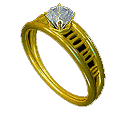Emerald Education
EMERALD HISTORY | EMERALD PROPERTIES | JUDGING EMERALD | EMERALD RINGS | ANCIENT TREASURES | UNEARTHED | QUEEN HELENE
Think Emerald in Rings | Emerald Engagement Rings | Emerald Wedding Rings | Emerald Anniversary Rings | Emerald Three Stone Rings | Emerald Diamond Rings | Emerald Bracelets
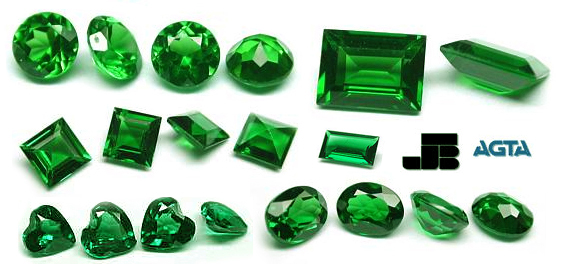
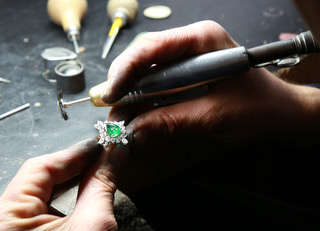
- We have showcased thousand of platinum diamond rings for men and women, wives and husbands, partners, daughters and sons.
- We have displayed gold and platinum gemstone diamond rings together.
- For more details please click on the corresponding pictures above, captioned text with links to corresponding pages.
- Diamonds are very carefully matched for color, clarity, measurements, thickness, shape, outline, cracks, flaws and cut.
- These lovely rings are a fabulous choice for a anniversary ring or engagement ring or wedding band to celbrate important moments in life.
- We provide complimentary Gemological Institute of America, European Gemological Laboratory third party appraisals on most of the rings at no extra charge.
- The process of development was not Impulsive and Disjointed, but Slow and Gradual, Comparable with Measured, Careful Approach.
- A deliberate approach patiently piecing together the Finely Detailed Elements of the Subject.
- Reveal Many Correspondences, Medieval Interpretations, Visual Impressions, Symbolic References to Characteristics.
- Decorative Schemes, Veiled Messages, Allegorical Representation, Divine Attributes.
- Stage-like setting, constructed according to the rules of centralized perspective emphasizing central stones position.
- The gentle shading lends the stone a soft delicate appearance, an extremely wide and subtle range of tonal values.
- Outlines thereby become blurred into soft transitions from areas of light and dark and hence lend plasticity to the ring panel countours being portrayed.
- Religious Symbolism Pieces Reference Purity Represent Passion of Christ and Sacrifice on the Cross, Discover Religious Motifs, Protection Motifs, Betrayal Motifs.
- Symbolic Meaning, Characteristic Features, Symbol of Christs Sacrificial Death on a Cross, A Red Carnation - a symbol of Passion of Christ, The rock, however, is Christ.
- Symbolize Nativity of Christ with Open Pomegranate, White Lily, Staff, Ermine, Vases Filled with Flowers, Winged Angels, Cross, A Red Carnation, Juniper Bush, Mountain Fissures.
- Symbol of Immaculate Conception, Symbol of his Passion, Resemblence to a Crucifix, Deer in the Background, Symbolic animal, the Lamb, Conturbatio Motif, Motif of Protection.
- Presentation of the Frankinscence by the Second King as the Central Motif of the Composition, Motif of Fighting Horsemen, A Symbol of Christ and the Baptism.
- Goodwill Passion of Christ, Symbolize Purity, Divine Attributes, Devotional Jewelry, Reconstructed, Reproduced, Cleaned, Polished, Trimmed, Borders, Workshop Restorartions.
- Trimmed, Cut Out, Four Borders, Panel, Vertical Support, Framed, Composition, Versions, Fragments, Albums, Catalogues, Original, Authentic, Crosspieces.
- Dark to Light, Lighter Shades, White Heightening, Soft Delicate Transitions, Graceful & Sophistication, Central Space, Centralized Planned.
- The Colors of the Draperies are Cool and Glassy, Mary in Light Crimson Dress and Blue Cloak, Whose Lining Shimmers in Pink and Grey, Fresh Palette Blue, Bathed in Blue Mist.
- Motif of Vegetation over the Edge, Motifs of the Movement and Expression, Motif of Betrayal, Dexilous Motif thus Remained Simply an Ideal, Open pomegranate - Passion of Christ.
- Chuch of Nativity in Bethlehem, Re-enactment of the Sacrifice taking place in front of the Altar during Mass, Era before Christ and Age of Grace.
- Naturalistic Representation of Flora and Fauna, It Shows the Study of a Lily, Executed with Extreme Care, The Lily Pricked with a Needle along Outlines and Bears the Traces.
- Context and Character Largely Defined, Divine Designation, Correct interpretation, Garrulousness and Errudition.
- Imperial Eagle, Ship of the Church, Goodwill, Comprising Laurel Branch, a Palm Branch and a Motto.
- Constellation of a Landscape and a Bridge, Idealized Images, Pasticity to his Forms, Purity and Virginity of Mary.
Emerald History: Green beryls are called emerald, blue aquamarine. Green emerald expresses faithfullness and continuity. The coloring agent is chrome, sometimes vanadium. The color is very stable against light and heat. The color distribution is often irregular; a dark green is most desired. Only the fine specimens are transparent. Often the emerald is clouded by inclusions. These are not classified as faults, but as evidence to the genuineness of the emerald as compared with synthetices.
Physical Properties:Emerald Color: Emerald Green, green and yellowish green; Emeralds Moh's Hardness: 7.5-8; Emeralds Density: 2.67-2.78; Emerald Chemical Composition: Aluminium Berrylium Silicate; Emeralds Transparency: Transparent to Opaque; Emeralds Refractive Index: 1.565-1.602; Emeralds Dispersion: 0.014; Emeralds Pleochroism: Definite; green, blue, blue green to yellow green
Emerald Jewelry | Rings: Emerald is widely used in rings such as emerald engagement rings, emerald anniversary rings and emerald wedding rings; also in emerald earrings and emerald bracelets along with diamonds. We have an inspirational collection of rings with emerald such as emerald engagement rings, wedding rings and emerald anniversary rings. Make sure you go for a ring rich green color emerald with a dark shade in a emerald ring.
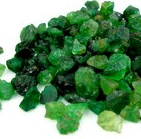
Emerald Buying Guide
Emerald is the green variety of the mineral beryl and one of the most highly prized all gems. Emerald is the birthstone for May and the zodiac stone for those born under Cancer's sign. Throughout history emerald has been one of the most desired and coveted of gems. Associated with Venus, the Roman goddess of love, the emerald was believed to bestow upon the wearer faithfulness and unchanging love. Emerald belongs to the gem family beryl. Colombia, Brazil, and Zambia are the major producers, but there is an increasing shortage of fine emerald, and producers are having trouble keeping up with world demands.
Emerald Color: The finest quality emerald has the color of fresh young green grass- an almost pure spectral green, possibly with a very faint tint of blue. The highest quality emeralds have medium tone and are bright green with good color saturation. Color distribution should be uniform.
Emerald Saturation: (color purity) is the brightness or vividness (dullness or drabness) of the color. It refers to the degree to which the hue is hidden by brown or gray. Colors with minimum amount of brown or gray are described as vivid or strong. For color purity GIA uses saturation and AGL uses intensity. Saturation can be "highly pure" and "slightly brownish or grayish". Our emeralds are "slightly brownish or grayish."
Emerald Hue: refers to the basic colors of blue, gren, yellow, orange, red, purple and violet. All emeralds exhibit some other colors in addition to their basic green color. To determine the hue, look for the dominant color in the face-up view. When you move the stone in different directions you see the different colors.
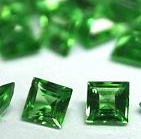
Emerald Education
Emerald Tone: Refers to the depth of color (light or dark). The lighest possible tone is colorless. The darkest is black. Tone is another word for the degree of lightness or darkness. Judging the tone of a stone is difficult because it doesnot display a single, uniform tone. To judge the tone of a stone, examine it face-up and look for areas of light and dark. Columbian emerald is a deep green with a very slight blue undertone and is considered the finest. African emerald is also a nice shade of green with a blue undertone with a slight darkening effect which makes it slightly less valuable than columbian. Emerald can have tones: "light-medium," "medium," "medium-dark," and "dark". We prefer emeralds with medium tones in rings & emerald jewelry.
Emerald Clarity: Clarity refers to the absence of internal flaws or inclusions. Type and placement of flaws are also very important. Flawless emeralds are so rare that inclusions are expected in genuine emerald. When there aren't any inclusions, one wonders if the stone is in fact an emerald. So placement of flaws are important when buying a emerald in rings.
Emerald Cut: A good cut will enhance stones natural beauty to the fullest. A poor cutter make may make the same stone less desirable, because a poor cut will significantly reduce the vividness and alter the depth of the color (saturation), usually producing a stone that is too dark. Flaws are very common in emeralds and that is why cut of an emerald is important in not allowing these flaws to penetrate deep into the gem.
Emerald Value: Emeralds which are well cut, pure deep green and are moderately clean (flaws placement is good) are most valuable in rings.
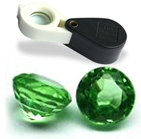
Important Factors
Emerald Size: The common unit of measurement for stones is weight, expressed in carats and decimal parts thereof. Also, remember again not to confuse weight with size. Some stones weight more than others bacause stones have different density. Size of stone which can be diameter, or length and width is expressed in millimeters. Our stones are not cut deep to gain weight but are well cut emeralds offering you maximum size.
Taking Care of Emerald Jewelry? When you store jewelry, protection from theft and damage should be a prime consideration. A jewelry box can protect pieces from damage if they are stored individually, but it is one of the first places burglars look. Emerald should never be cleaned with an ultrasonic cleaner but with a soft cloth. Emeralds should be wrapped separately in soft material or placed individually in pouches. Wear jewelry after you are dressed up. Have a professional check your jewelry every couple of years to check the setting as well as the stones.
Important Considerations: Both intensity and tone of color can be significantly affected by the proportioning of the cut. In other words, a good gem cutter working with a fine stone will be able to bring out its inherent beauty to the fullest. A poor cutter make may make the same stone less desirable, beacause a poor cut will significantly reduce the vividness and alter the depth of the color (saturation), usually producing a stone that is too dark. In emeralds a shallow cut might bring more color saturation than a deeper cut.
Step-Cut Diamonds - Stones whose outlines are either squarish or rectangular and whose facets are rectilinear and arranged parallel to the girdle are called as step-cut or trap-cut stones. These stones often have their corners truncated, creating an emerald cut with an octagonal outline. This is done because sharp corners are points of weakness where a diamond may break or fracture. Instead of a culet, step-cut stones have a keel running throughout the length of the pavilion. Like other fancy shaped diamonds, emerald cut diamonds can come in a variety of length to width ratios. The most popular and classic outline of emerald cut diamonds are about a value of 1.5.
Because both the pavilion and crown are comparatively shallow, step cut stones are generally not as bright and never as fiery and sparkling as brilliant cut stones, but rather accentuate a diamond's clarity (as even the slightest flaw would be very highly visible), whiteness, and lustre (and therefore good polish is recommended).
Due to the current demand for brilliant and brilliant-like cuts, step cut diamonds suffer somewhat in value; stones that are deep enough may be re-cut into more popular shapes. However, the step cut's rectilinear form were very popular in the Art Deco period. Early antique jewelry of the period features step-cut stones prominently, and there is a market in producing new step-cut stones to repair antique jewelry or to reproduce it. The slender, rectangular baguette (from the French, resembling a loaf of bread) was and is the most common form of the step cut: today, it is most often used as an accent stone to flank a ring's larger central (and usually brilliant-cut) stone.
Square step cuts whose corners are not truncated are known as carré; they are also characteristic of antique jewelry. They may resemble the square-shaped Princess cut in passing, but a carré's lack of fire and simpler facets are distinctive. They may or may not have a culet. In Western jewelry dating to before the advent of brilliant-type cuts, very shallow step-cut stones were used as lustrous covers for miniature paintings: these are known in the antique market as portrait stones. Characteristic of Indian jewelry are lasque diamonds, which may be the earliest form of step cut. They are flat stones with large tables and asymmetric outlines.
Other forms of the step cut include triangle, kite, lozenge, trapeze, and obus shapes.
Enhancements: Unpolished gemstones are typically very rough. Looking at gemstones straight from the mine, they might be mistaken for pebbles or gravel.
Nearly all gemstones available on the open market have been "enhanced" (i.e. something has been done to make them look better). Gemstones that have not been enhanced are very rare and command extravagant prices.
There are many methods of enhancing gemstones. Some of the most common enhancement treatments are described below. For more information on gemstone enhancements, visit the American Gem Trade Association website
The use of heat to enhance the color of some gemstones is a common practice around the globe and has been going on for centuries. It is part of the standard polishing and finishing process for many gemstone varieties, including aquamarine, citrine, amethyst, sapphire, ruby and tanzanite, and is accepted by the jewelry industry and the American Gem Trade Association.
The enhanced color of heat-treated gemstones is permanent and does not require special care. Aquamarine, citrine, amethyst, sapphire, ruby and tanzanite gemstones offered by Blue Nile have been heat treated.
Colorless oil, wax and resin are used to improve the clarity of some gemstones. The colorless oil, wax or resin is infused into surface-reaching fissures (called inclusions) to improve the stone's appearance. This process began centuries ago by gemstone merchants who found that immersing emeralds in clear oil or waxes made them look clearer to the unaided eye. Today, almost all emeralds are treated in this way. Gemstones with colorless oil, wax or resin enhancement, including emeralds, can be harmed if handled roughly. Recommended special care for such gemstones is avoidance of sudden temperature changes, steaming, chemicals and ultrasonic exposure.
Emeralds offered by magic-fairy-diamonds.com may have been treated with colorless oil, wax or resin.
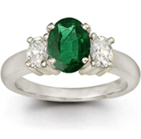
Emerald Rings
Looking for emerald in rings? John F. Kennedy gave his future bride Jacqueline Bouvier a 2.88 carat diamond and emerald engagement ring from Van Cleef & Arpels. The name emerald derives from Greek smaragdos and means green stone. Emerald in emerald diamond rings is more precious than a diamond. Emeralds are formed by rising magma and metamorphism. Our emerald jewelry collection includes emerald diamond rings, emerald engagement rings, emerald anniversary rings, emerald wedding bands & three stone rings. Three stone rings with emerald and diamond in our rings collection are popular as engagement rings & anniversary rings. View Emerald and Diamond Rings.
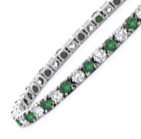
Emerald Bracelets
A emerald diamond bracelet is a piece of jewelry that drapes softly around the wrist. Diamond emerald bracelets are an elegant piece of jewelry that provides a shimmering circle of diamonds and gemstones around the wrist. The proper length of a bracelet will vary with the size of the wrist it is to be worn on. With the bracelet on the wrist, the space between the bracelet and the wrist should be one finger width. If the bracelet is too long it will catch on clothing and can put stress on the hinge joints. If the diamond gemstone bracelet is too short, it will not only be uncomfortable and cause damage to the links and joints. View Emerald and Diamond Bracelets.
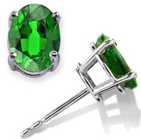
Emerald Jewelry
Earrings originated in the Middle East in about 2500 BC. Today, earrings are considered part of everyday life that can be worn day or night for every occasion. Earrings can be fun and flirty or sophisticated and stylish. Wives, mothers, daughters, friends. The special woman deserves a special piece of sapphire jewelry, to show your love choose from emerald earrings and emerald pendants. Choose from emerald stud earrings, hoop earrings, drop earrings to mark the most special occasions in life including engagement, wedding and graduations. Today, sapphire jewelry has become a symbol of love and devotion. View Emerald Earrings.
